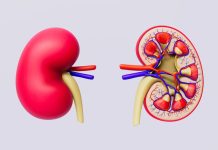
What if the biological processes triggering multiple sclerosis (MS) were set in motion long before the disease’s clinical symptoms appeared?
A new study from the Paris Brain Institute suggests just that, revealing a potential “prodromal phase” of MS. However, it’s important to note that this phase does not currently offer an early detection method.
MS is a neurological disease where the immune system mistakenly attacks the protective myelin sheath of nerve fibers, disrupting the transmission of nerve signals between the brain and other parts of the body.
In France alone, around 120,000 people grapple with MS. Although management techniques have improved over the past decade, there is still no cure, particularly for the 15% of patients with a progressive form of the disease.
One significant challenge in dealing with MS is the lack of a straightforward relationship between the severity of nerve fiber damage and a patient’s symptoms. This complexity makes it difficult to predict how the disease will progress.
As Professor Céline Louapre, a neurologist at Pitié-Salpêtrière Hospital and head of the Paris Brain Institute’s clinical investigation center, explains, “The challenge today is to detect the disease as early as possible, well before the lesions are visible on MRI, in the hope of delaying the onset of disability.”
Several prior studies have hinted that some patients exhibit subtle symptoms up to a decade before receiving an official MS diagnosis.
The current study aims to quantify this phenomenon on a larger scale and rigorously define a “prodromal phase” during which the disease silently takes hold.
Furthermore, understanding these early symptoms could pinpoint when the inflammatory process causing lesions in the central nervous system begins.
To tackle this challenge, Professor Céline Louapre, along with Octave Guinebretière and Thomas Nedelac, conducted a comprehensive analysis of health data.
They examined the medical records of 20,174 patients with MS, 54,790 patients without MS, and 37,814 patients with two autoimmune diseases that primarily affect women and young adults: Crohn’s disease and lupus.
Their analysis utilized anonymized medical records from the UK’s Health Improvement Network (THIN) and focused on the frequency of 113 common symptoms and illnesses over a decade, encompassing five years before and after the MS diagnosis.
A similar reference period was used for patients without autoimmune diseases, acting as the control group.
The researchers identified five symptoms significantly associated with later MS diagnoses: depression, sexual disorders, constipation, cystitis, and urinary tract infections. While these symptoms appeared as early clinical warning signs, they were not specific to MS.
Importantly, these symptoms were also found in the prodromal phase of lupus and Crohn’s disease and were prevalent in healthy individuals.
While these signs alone are insufficient for early MS diagnosis, they do contribute to a deeper understanding of the disease’s mechanisms and natural history.
Additionally, these findings may serve as early indicators in populations at specific risk, such as certain familial forms of MS, potentially facilitating timely therapeutic interventions.
In summary, this study sheds light on the possibility of a prodromal phase preceding MS diagnosis.
Although it doesn’t offer an immediate early detection method, it advances our understanding of MS and emphasizes the need to explore the disease’s origins well before its neurological symptoms become apparent.
If you care about heart health, please read studies about how eating eggs can help reduce heart disease risk, and herbal supplements could harm your heart rhythm.
For more information about health, please see recent studies about how drinking milk affects risks of heart disease and cancer, and results showing strawberries could help prevent Alzheimer’s disease.
The research findings can be found in Neurology.
Copyright © 2023 Knowridge Science Report. All rights reserved.



